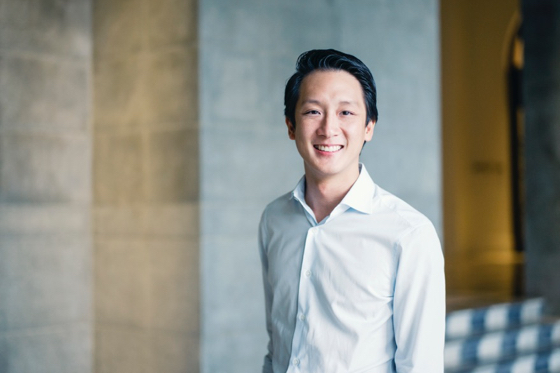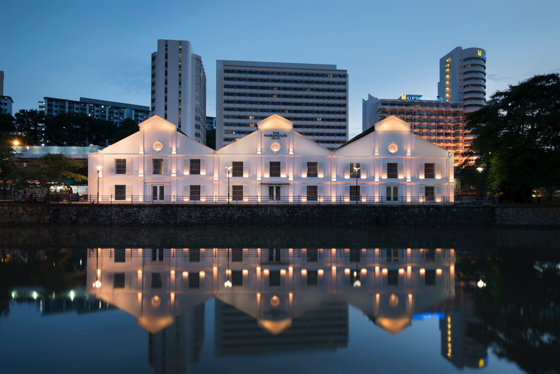A newcomer to Singapore’s hotel industry is Wee Teng Wen, 37, perhaps unsurprisingly given his family ties with the United Overseas Land (UOL) Group, which owns Pan Pacific Hotel Group (PPHG).
Thus far, the honors graduate from University of Pennsylvania’s Wharton School has made his mark on bars and restaurants rather than hotels. Since co-founding The Lo & Behold Group over a decade ago, Wee has fielded trendy dining venues such as The White Rabbit, The Black Swan and the latest, Odette. There’s also a dry cleaning service that looks a lot less dry business with its name, For The Love Of Laundry, using all-natural green technology.
Wee, the grandson of Wee Cho Yaw, chairman of UOL group, has secured a management contract for a 37-room boutique hotel renovated from a 1895 warehouse on the bank of Singapore’s Robertson Quay. The hotel soft-opened last month.

The family’s interest in the hotel sector may have eventually rubbed on Wee. The patriarch’s daughter Wee Wei Ling is executive director (asset and lifestyle) at PPHG; her daughter, Shin Hui Tan, is married to Allen Law, CEO of Park Hotel Group and son of Hong Kong real estate tycoon, Law Kar Po.
But Wee says moving into the hotel industry is “a natural extension” for The Lo & Behold Group, which he says has systems and trained staff in place. Plus, he sees “an opportunity to interpret hotels with a fresh approach.” The site, space and the rich heritage of The Warehouse Hotel fits the mission.
The building is owned under a lease by a little-known Singapore company, I Hotel. The three roofs, which give it the signature warehouse look and the skeleton of the building, have been preserved, while the interior’s industrial design is in keeping with the building’s history.
The hotel opens to a cavernous communal space, which is the reception, lobby and bar at the same time. Rooms are of different sizes – 20sqm, 25sqm, 32sqm – and spacious compared with many other boutique hotel rooms in the city. Local architect Asylum softened the industrial design by contrasting iron-wrought beams with soft greys, warm woods and leather.
But Wee is entering at a time when hotel performance in Singapore is dipping across all segments in the industry. According to CBRE Singapore Hotel MarketView H2 2016, for the first 11 months of 2016, room nights sold rose 5.5% while room nights available increased 6.3% YOY. Market-wide ADR contracted 3.7% to S$236.58 through November 2016.
Hotels that opened in the second half of 2016 include the 293-key M Social Singapore and 476-key Four Points by Sheraton following a renovation and rebranding from the former Riverview Singapore. For 2017, about 3,400 rooms, ranging from luxury to midscale, are expected to enter the market, representing a 3.8% increase of room nights available YOY.
“The substantial increase in room inventory will exert downward pressure on occupancy levels across all segments,” CBRE stated. “In addition, the market might have difficulty in absorbing the spike in rooms if demand continues to be muted. After 2018, the overcapacity in room supply will start to taper off.”

Boutique hotels are also aplenty in Singapore. But next-gen hotelier Wee believes the battle lines are drawn on who can best tell the local story. “Boutique hotels shouldn’t have to impose their point of view on the landscape; they should be a prism for guests, tourists and locals alike, to discover the neighborhood and city,” Wee said. “The best hotels are a platform that showcases the best of what the city offers. This is what we hope to accomplish.”
Wee is also unfazed that even the large hotel groups are acting small by fielding boutique brands in Singapore, and have the distribution wherewithal to back these properties. An example: InterContinental Hotels Group’s Indigo hotel in the colorful neighborhood of Katong in the east.
When asked what infrastructure he has to manage hotels, Wee says, “Over the years, we have built the foundation of our offerings with strong marketing, PR, HR and finance teams. In addition, we have a deep web of personal connections throughout Singapore and beyond, which we are able to mine for different aspects of each project. This makes it easy for an ownership team with no prior management experience to leverage our strengths and to see value in our relationship.”
There’s no reliance or synergy with PPHG, Wee added. “Aside from seeking advice regarding hotel-specific IT systems – nothing.”
Wee is confident the hotel will reach an average room rate of S$300 (US$212) and industry average occupancy rate within three to six months, with a strong F&B revenue through the bar and restaurant offerings.
The hotel fields a restaurant called Po, a tribute to popos (Mandarin for grandmother) serving Singaporean dishes and flavors in a setting that harks back to the kopi tiam (coffee shop) era but with a contemporary touch. Its lobby bar features cocktails recalling the building’s past, when it was used for spice trading and even a disco. All alcohol infusions are made in-house, a nod to the address’s past as a spirits distillery street.
“Today’s customers are savvy and well-travelled, and they seek out hotel experiences that offer them a local perspective to the city or neighborhood,” Wee said. “Our goal is to deliver the standards and comfort of an international hotel chain while allowing customers to discover the history and heritage of the venue in a cohesive and unparalleled guest experience.”
The product will speak for Lo & Behold’s hotel management capability, said a confident Wee. “When the dust settles on this project, we will be exploring other hospitality opportunities in the region, be it sponsored or self-owned.”
